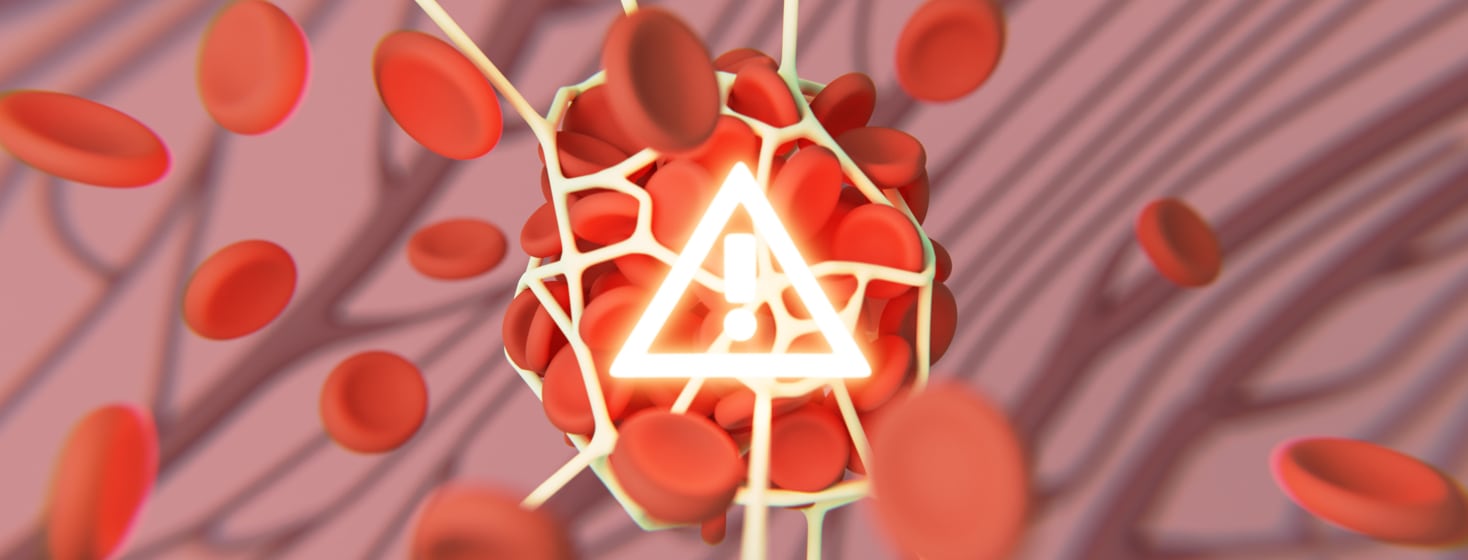The Risk of Blood Clots With Lupus
In a previous article, I spoke about my personal experience of having a possible DVT (deep vein thrombosis). Still, I wanted to talk more in-depth about why lupus patients are at a higher risk of developing them and some signs and symptoms of a blood clot that we can look out for.
There is a condition called antiphospholipid syndrome (APS) that can be associated with lupus, but it can also arise with other autoimmune diseases too. The syndrome is characterized by "sticky blood," where there is often recurrent thrombosis in the veins and arteries.1
When I was first diagnosed with lupus, I had many blood tests done which revealed I had these anti-phospholipid antibodies present. I remember feeling really scared by this.
A few years later, I ended up with a DVT in my right leg, although I had been pregnant, which raises the risks even in healthy people.
This syndrome can cause recurrent miscarriages and fetal loss, often within the first 13 weeks of pregnancy. This is because these rogue antibodies can prevent the pregnancy from embedding in the womb properly.2
These blood clots can appear in the legs, lungs (pulmonary embolism), or brain, which would present as a stroke.
Tips to reduce blood clot risk
Here are some of the things that we can do to lessen the risks of developing a clot, which was advised to me by my hospital consultant:
Stay hydrated
Drinking plenty of water each day is important, as dehydration can cause the blood to thicken. One way my doctor told me to gauge this is to look at my urine. If it’s dark in color, I'd need to drink more. Ideally, it should be a nice pale-yellow color.
Avoid foods that are high in unhealthy fats
Some evidence suggests foods high in unhealthy fats can cause plaque build-up in the blood vessels.
Wear compression stockings
These helped my blood to flow to other areas of the body and stopped it from pooling.
Check vitamin D levels
My doctor told me that vitamin D has an anticoagulant effect on the blood. I have read several studies regarding this, and it has shown that low levels were associated with DVT.
Keep moving
I was instructed to keep mobile. That's because sitting and lying in bed for long periods can contribute to getting a DVT.
Medications
Taking medications can be an effective way of preventing clots. Hydroxychloroquine, which is a very common drug prescribed for lupus, has shown promise at preventing clots.3
Research shows taking blood thinning medications like Heparin and Warfarin can help treat people who have already had a blood clot and if they have a high risk of developing another.4
Don’t smoke
My providers told me smoking could increase the risk of blood clots.
Symptoms of a DVT
Some symptoms of a DVT can include:
- Swelling or cramping usually in just one leg.
- Warm red skin around the painful area.
- Swollen or bulging veins
Sometimes people only find out they have a blood clot when it progresses to a pulmonary embolism which is when the clot travels to the lungs. These signs can include chest pain, shortness of breath, and a fast heart rate.
With lupus, your medical team must regularly check your blood to assess whether you’re at a higher risk of developing a blood clot.

Join the conversation